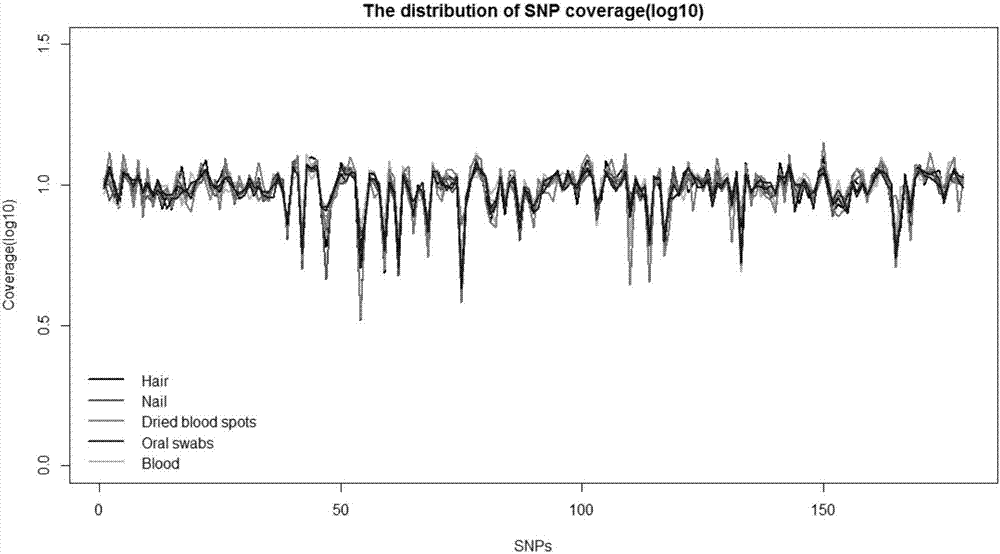Multi-PCR primer group for human paternity identification and detection method
A paternity identification and detection method technology, applied to part or all of the nucleotide sequence and detection field, can solve the problems of limited amount of fetal cell-free DNA, SNP genetic difference interference, result deviation and other problems, so as to eliminate the difference in the number of Reads distribution and reduce The effect of mutation interference and background noise reduction
- Summary
- Abstract
- Description
- Claims
- Application Information
AI Technical Summary
Problems solved by technology
Method used
Image
Examples
Embodiment Construction
[0043] The invention will be described in detail below in conjunction with specific embodiments. But it is not intended to limit the present invention.
[0044] Herein, the expression "above" includes the original number.
[0045] 1. Use the multiplex PCR primer set composed of part or all of the SNP genetic marker sites shown in Table 1 to perform human parentage detection, and the following are the specific steps.
[0046] a. DNA extraction
[0047] The pregnant woman samples in this experiment were whole blood collected with Ardent blood collection tubes, and the plasma was obtained by two-step centrifugation. The specific operation was as follows: 4°C, 1600g, centrifuged for 10min, and the supernatant was drawn into a new 2mL EP tube. The collected supernatant was then centrifuged at 16000g for 10min at 4°C, and the supernatant was also pipetted into a new 2mL EP tube for later use.
[0048] (1) Extract fetal cell-free DNA
[0049] 1) Take 2mL of plasma, equilibrate to...
PUM
 Login to View More
Login to View More Abstract
Description
Claims
Application Information
 Login to View More
Login to View More - R&D
- Intellectual Property
- Life Sciences
- Materials
- Tech Scout
- Unparalleled Data Quality
- Higher Quality Content
- 60% Fewer Hallucinations
Browse by: Latest US Patents, China's latest patents, Technical Efficacy Thesaurus, Application Domain, Technology Topic, Popular Technical Reports.
© 2025 PatSnap. All rights reserved.Legal|Privacy policy|Modern Slavery Act Transparency Statement|Sitemap|About US| Contact US: help@patsnap.com



